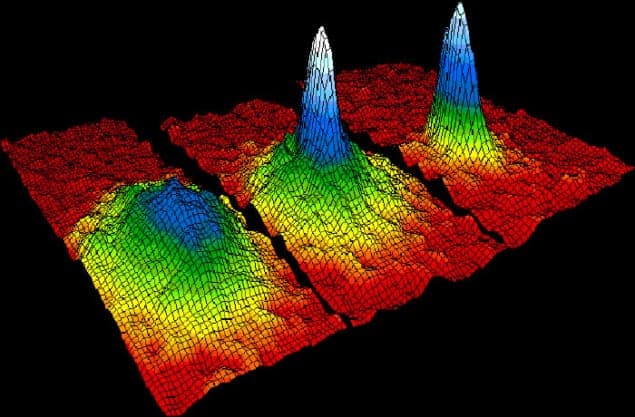
Evidence for the extra space-like dimensions predicted by string theory could be found within Bose–Einstein condensates (BECs) – according to Sergio Gutiérrez, Abel Camacho and Héctor Hernández of Universidad Autonoma Metropolitana-Iztapalapa in Mexico City.
String theories and some other theories that try to describe physics beyond the Standard Model rely on the existence of extra dimensions. These dimensions are so small (about 10–35 m) that they have been impossible to detect, even by smashing particles together at the Large Hadron Collider or any conceivable future particle accelerator.
A BEC is an ensemble of ultracold atoms that are all in one quantum state – having a macroscopic wave function that extends across the entire ensemble. Writing in a preprint on arXiv, Gutiérrez, Camacho and Hernández point out that the wave function of the BEC would be confined within each extra dimension – much like the familiar “particle in a box” problem of quantum mechanics. This would result in a series of discrete energy levels, which would have an effect on the thermodynamic properties of the BEC.
Specific heat
The researchers reckon that the presence of extra dimensions could be revealed by measuring the discontinuity in specific heat that occurs when an ultracold gas of rubidium atoms condense to form a BEC. Studying this discontinuity as a function of the number of atoms in the BEC should point to extra dimensions, they say.
However, not all physicists are convinced. Writing on her Backreaction blog, Sabine Hossenfelder of the Frankfurt Institute for Advanced Studies points out that an enormous amount of energy would be needed to populate the discrete energy levels associated with the extra dimensions. As a result, she says, there should be no discernible effect on the thermodynamic properties of the BEC.



